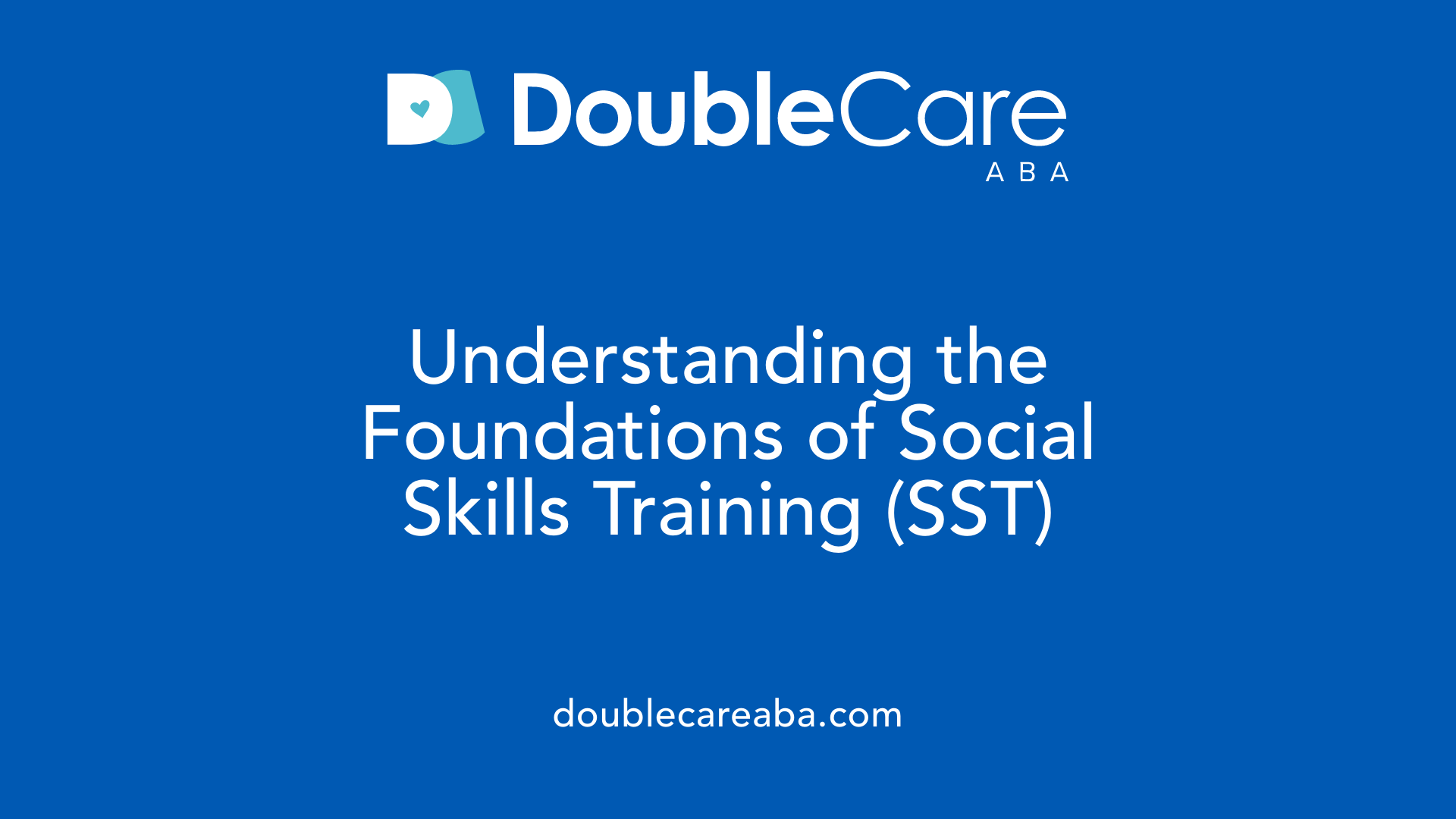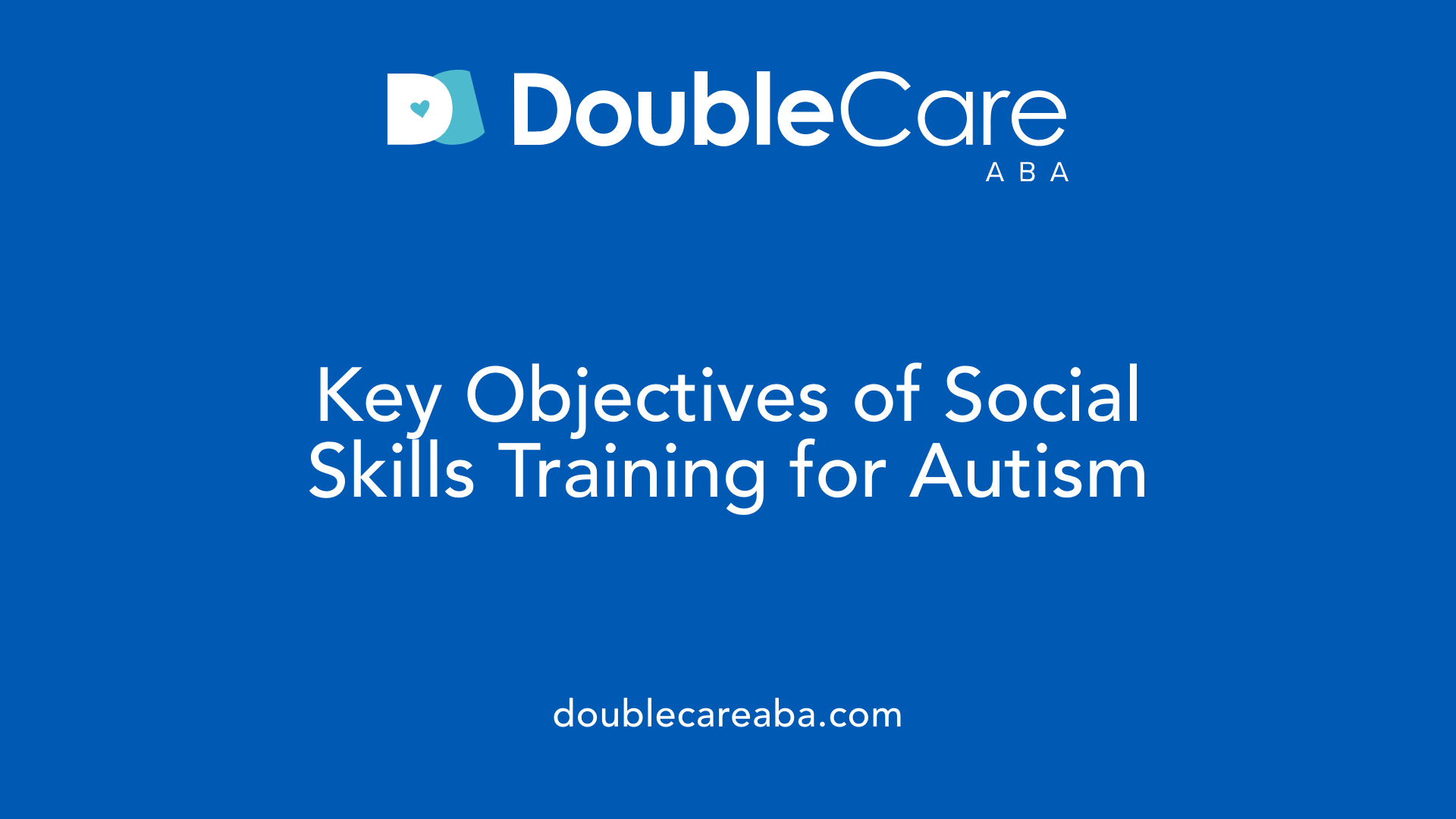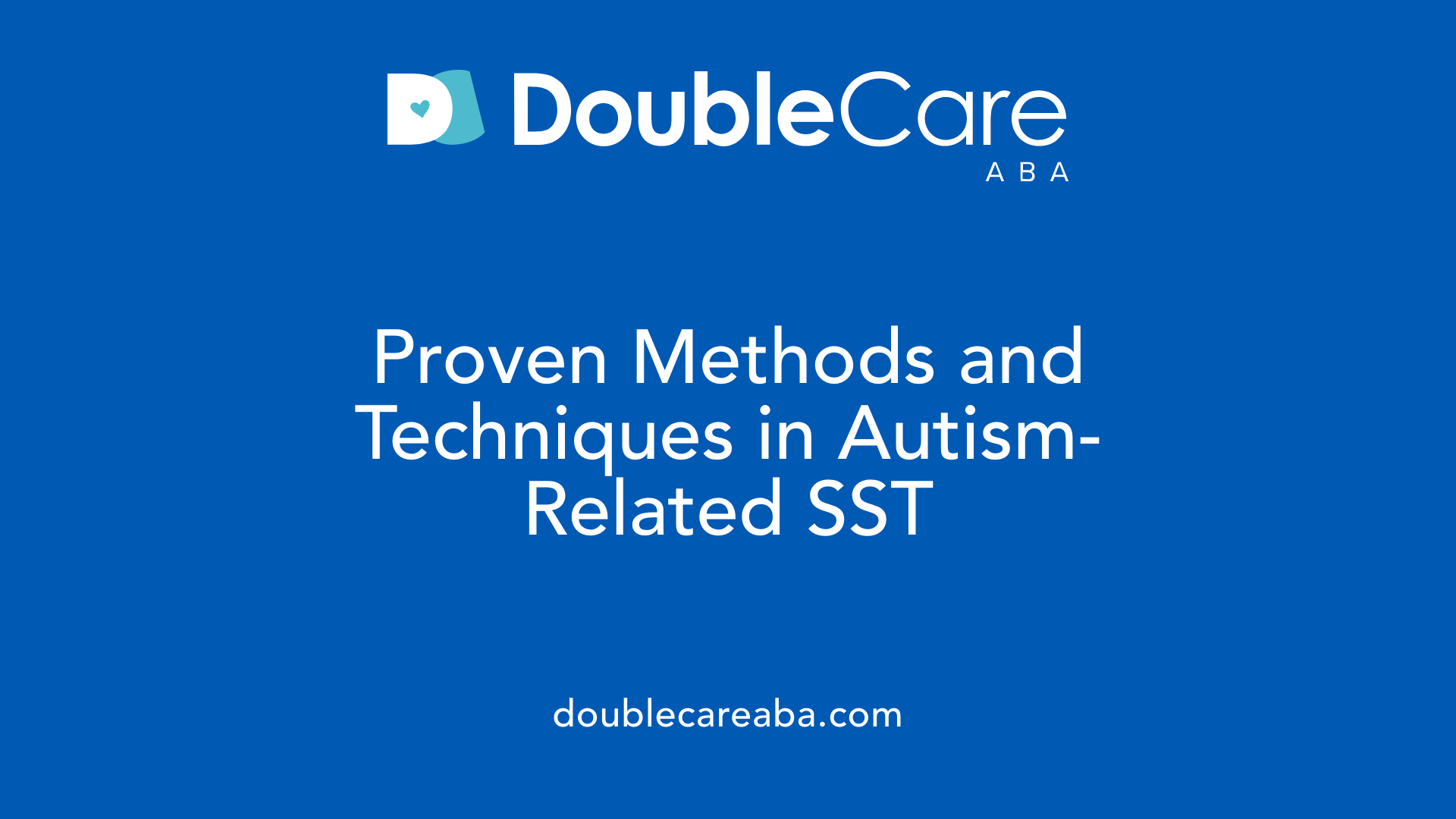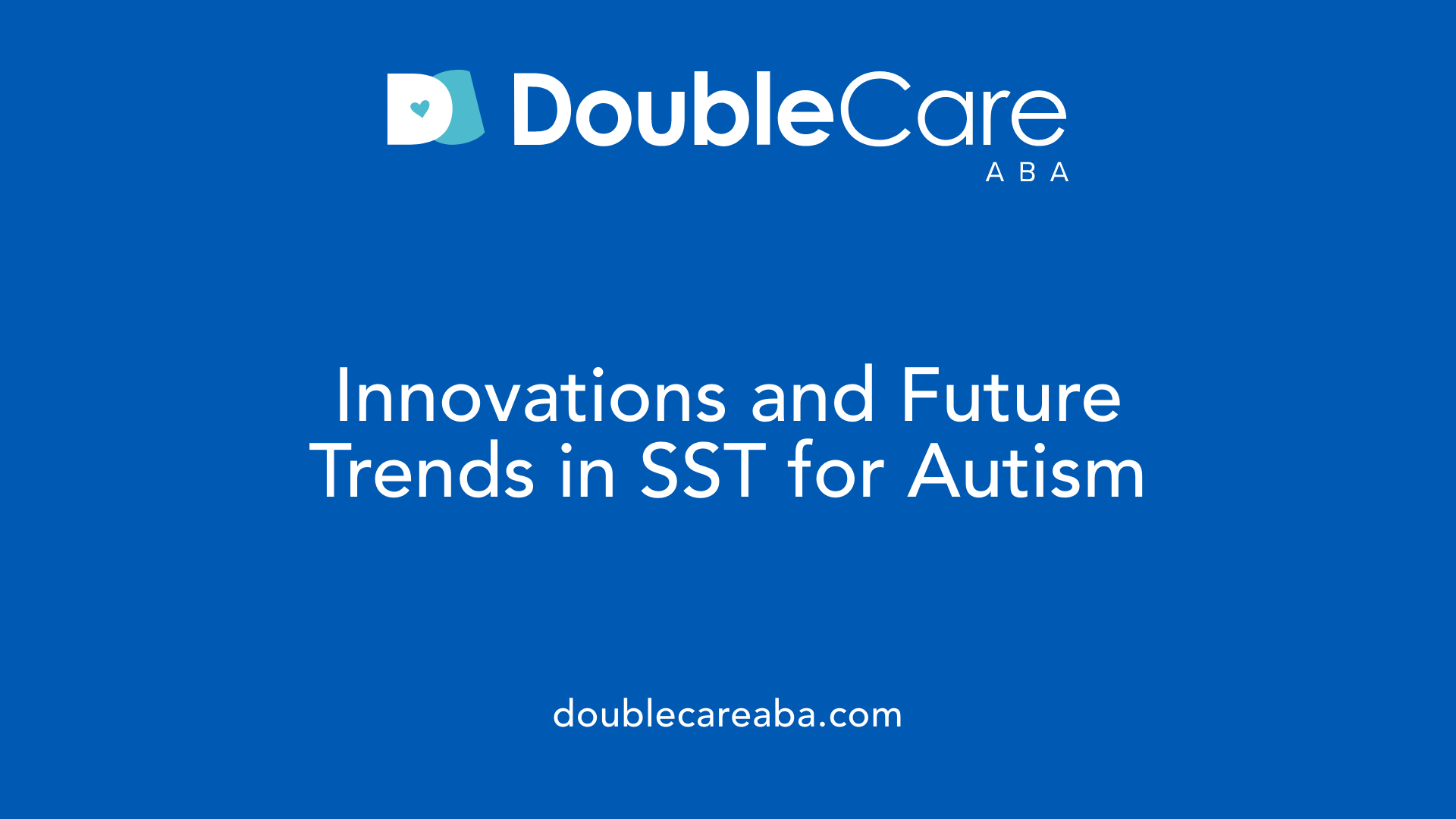Understanding Social Skills Training (SST) for Autism
Social Skills Training (SST) represents a scientifically validated approach to improving social functioning in individuals with autism spectrum disorder (ASD). As an intervention rooted in behavioral principles, SST aims to teach essential social behaviors through structured, systematic methods. This article explores the core concepts, techniques, structures, and emerging trends in SST, emphasizing its role in fostering social competence and emotional understanding among those on the spectrum.
Core Concepts of Social Skills Training (SST)

What is social skills training (SST) and its core concepts?
Social Skills Training (SST) is an organized, research-backed approach designed to improve social abilities such as effective communication, understanding social cues, and engaging in social interactions. It utilizes a variety of instructional methods including modeling, role-playing, practicing behaviors, receiving feedback, and positive reinforcement. These techniques are aimed at helping individuals learn and exhibit more appropriate social responses.
SST can be implemented with different groups of people, notably those with autism spectrum disorder (ASD), social anxiety disorder, schizophrenia, and other mental health or developmental conditions. It is adaptable for use in both one-on-one and group settings.
The essential parts of SST involve assessing a person's specific social skills deficits, delivering targeted interventions, providing chances for practice, and promoting the generalization of skills across settings like home, school, and community. The ultimate goal is to build social confidence, facilitate meaningful interactions, and reduce feelings of social isolation. By teaching individuals how to interpret social cues and respond appropriately, SST helps foster greater social success and personal well-being.
Goals and Purposes of SST for Individuals with Autism

What are the main goals and purposes of social skills training for individuals with autism?
Social Skills Training (SST) is designed to address common challenges faced by individuals with autism in social interactions. The primary goal is to improve social communication, helping individuals understand how to engage with others more effectively. This includes recognizing social cues like facial expressions, tone of voice, gestures, and body language, which are often difficult to interpret for many autistic individuals.
Another key aim is to promote confidence in social settings. By practicing skills in structured environments such as role-playing and social stories, individuals learn to navigate conversations, greetings, and other social norms with greater self-assurance.
SST also focuses on increasing independence in social situations. This means equipping individuals with the tools they need to initiate interactions, maintain friendships, and participate actively in community activities without excessive assistance.
These programs typically employ various methods like modeling, positive reinforcement, visual supports, and peer mediation to teach appropriate social behaviors, foster empathy, and enhance communication skills. Over time, the development of these skills can lead to better social integration and an improved quality of life.
Overall, SST aims to help individuals with autism understand and adapt to social environments, reducing feelings of isolation and building meaningful connections. By doing so, it supports their overall social development and promotes their ability to function more confidently and independently in everyday interactions.
Methods and Techniques Employed in SST for Autism

What are the typical methods and techniques used in SST for autism?
Social Skills Training (SST) for autism employs a variety of evidence-based methods to teach and reinforce social skills effectively. Direct instruction is often used to introduce new skills in a structured manner, providing clear explanations and demonstrations.
Modeling and role-playing are central techniques, allowing individuals to observe appropriate behaviors and practice in a safe, controlled setting. These activities help build confidence and ensure understanding of social cues and responses.
Visual aids play a significant role in enhancing comprehension. Social narratives, cartoons, and visual supports such as cue cards or diagrams help explain social rules and expected behaviors. These tools make abstract social concepts more concrete and accessible.
Innovative approaches like the Program for the Education and Enrichment of Relational Skills (PEERS) incorporate lessons on initiating conversations, humor, conflict resolution, and managing social boundaries. PEERS, often delivered in group format, emphasizes active skill practice in real-world scenarios, with caregiver involvement to promote generalization.
Recently, digital tools and technology-based interventions have gained popularity. Computer programs, avatars, virtual role-playing, and therapeutic robots provide engaging platforms for practicing social skills outside traditional settings. These tools facilitate repetition, immediate feedback, and personalized learning.
Overall, SST combines instruction, modeling, interactive practice, and reinforcement, tailoring approaches to meet individual needs. This multipronged strategy aims to improve social understanding, enhance communication, and foster meaningful social connections for individuals with autism.
Structure and Implementation Strategies of SST Programs

How are SST programs typically structured and implemented?
Social Skills Training (SST) initiatives are designed with a clear framework that begins with identifying individual social skill deficits. Facilitators often collaborate with the individual and their caregivers to set specific, achievable goals for social development.
Once the goals are established, SST programs employ a variety of instructional techniques to teach and reinforce social skills. These include modeling appropriate behaviors, role-playing scenarios, providing corrective feedback, and assigning homework exercises to promote skill generalization.
Traditional face-to-face (F2F) SST sessions usually involve direct interactions between a trained facilitator and the individual. These sessions are commonly delivered in small groups or one-on-one, depending on the participant's needs, in settings like clinics, schools, or homes.
Many programs follow structured curricula—such as the AFIRM model, which guides participants through four lessons to develop social skills progressively—ensuring consistency and clarity in instruction.
In recent years, technological innovations have expanded the methods of delivering SST. Behavioral Intervention Technologies (BITs) utilize tools like computer-based programs, virtual avatars, and therapeutic robots. These technologies allow learners to practice social interactions in a controlled, engaging environment and can often be accessed remotely.
Typically, SST programs include multiple sessions, often around eight, each lasting about an hour. The scope of implementation varies based on individual goals, ranging from brief interventions to more comprehensive long-term programs.
Assessing progress is an integral part of SST. Practitioners usually rely on validated tools such as the Social Responsiveness Scale (SRS) and the Social Skills Rating System (SSRS). These instruments help track improvements and guide adjustments to the intervention plan.
Overall, SST programs are adaptable, combining traditional methods with modern technology to optimize social skills development across diverse settings, from classrooms to community centers.
Efficacy and Evidence Supporting SST for Autism
What evidence supports the effectiveness of SST in autism support and development?
Research consistently shows that Social Skills Training (SST) can significantly enhance social interactions for individuals with autism. Meta-analyses reveal medium to large effect sizes, with an effect size of 0.81 for traditional face-to-face SST and 0.93 for behavioral intervention technologies like computer programs and robots. This demonstrates that both delivery methods can be highly effective in improving social skills.
Studies indicate that SST helps individuals develop vital skills such as initiating conversations, understanding social cues, and engaging with peers. While effectiveness varies based on individual differences and program quality, overall findings support SST as an evidence-based intervention.
What are the key outcome measures?
Outcome assessments often include standardized scales like the Vineland Adaptive Behavior Scales, which measure socialization levels, and reports from parents, teachers, or caregivers about social skills in real-world contexts. Specific skills targeted include verbal and non-verbal communication, emotional recognition, assertiveness, and participation in social activities.
How significant are the improvements?
Research demonstrates that SST can produce notable improvements in social competence, confidence, and relationship-building. Effect sizes from meta-analyses are in the medium to large range, indicating substantial benefits. For example, effect sizes of 0.81 and 0.93 showcase the potential for meaningful and lasting changes.
Are there lasting effects?
Follow-up studies, including assessments six months post-intervention, suggest that gains from SST can be maintained over time, especially when programs include parent or caregiver involvement. This highlights the importance of ongoing support and practice to sustain social skill development.
| Aspect | Findings | Supporting Data | Additional Details |
|---|---|---|---|
| Effect Sizes | Medium to large effect sizes in social skill improvements | g=0.81 (F2F-SST), g=0.93 (BITs-SST) | Effect sizes reflect improvements across various settings |
| Outcome Measures | Standardized scales and real-life social behavior | Vineland scales, caregiver reports | Measures both broad and specific social skills |
| Long-Term Impacts | Maintenance of skills after follow-up assessments | 6-month follow-up data | Emphasizes importance of continued practice and support |
Overall, evidence underscores SST as a beneficial, supported approach that can markedly improve social functioning for individuals with autism, contributing to better social participation and quality of life.
Recent Advances and Future Directions in SST

What are the recent developments or advances in social skills training for autism?
Social Skills Training (SST) for autism has seen notable progress with the incorporation of new technologies and structured programs. Recent advancements include the integration of digital platforms, virtual reality environments, and therapeutic robots. These tools provide engaging, personalized experiences that can adapt to each individual's needs, making therapy more accessible and effective.
Structured programs like the UCLA PEERS (Promoting and Enriching Peer Relationships) have gained prominence. PEERS is a well-designed 16-week group intervention emphasizing real-world application of social skills, such as initiating conversations, understanding social cues, and maintaining friendships. Visual aids, social stories, and role-play exercises form core components, ensuring that learned skills translate into everyday social interactions.
Tailoring interventions has become a priority to maximize impact. Using personalized teaching stories, visual supports, and community involvement helps individuals with autism better understand social expectations and emotions. This customization supports not only skill acquisition but also emotional regulation and social awareness.
Long-term benefits of these approaches are supported by research indicating sustained improvements in peer relationships and social competence. Meta-analyses show effect sizes in the medium to large range, suggesting that both technology-assisted SST and traditional face-to-face methods can be equally effective.
Looking ahead, future directions focus on understanding the underlying mechanisms of social learning in autism. There is ongoing exploration of how to optimize intervention timing, intensity, and delivery methods. The use of innovative technology aims to improve accessibility, especially for those with limited access to in-person services. Overall, these advancements promise to enhance the effectiveness, personalization, and reach of SST programs.
| Recent Development | Description | Benefits |
|---|---|---|
| Digital Platforms | Computer programs, social robots, virtual reality environments | Engaging, customizable, increased accessibility |
| Structured Programs (PEERS) | Group-based, skill-focused curricula with community integration | Practical, real-world applications, sustained gains |
| Personalization Techniques | Visual supports, social stories, tailored scenarios | Better understanding, emotional regulation |
| Long-Term Focus | Emphasis on generalization and maintenance of skills | Lasting social competence |
In summary, recent advances in SST for autism encompass technological innovations, structured programs like PEERS, and personalized approaches. These developments aim to produce lasting improvements in social functioning, helping individuals build meaningful relationships and thrive socially.
Specialized Phases of Social Skills Training
What are the four phases of social skills training?
Social Skills Training (SST) involves several structured steps that help individuals improve their social interactions. These phases are Practice, Praise, Pointing out, and Prompting. Each plays a distinct role in the learning process.
The Practice phase allows learners to rehearse new social behaviors in controlled settings. This encourages active engagement and helps to build confidence. During this stage, individuals get opportunities to try out specific skills such as making eye contact or initiating conversations.
Following practice, Praise is used to reinforce correct responses and motivate continued effort. Positive feedback helps solidify desired behaviors and boosts self-esteem.
Pointing out involves highlighting social cues or mistakes, which provides learners with awareness about social norms. This might include identifying when someone is upset or when a behavior is socially appropriate.
Prompting offers cues or assistance to guide the correct behavior, especially when learners struggle. Prompts can be verbal hints, gestures, or physical assistance.
These four phases work together in a systematic way. Initially, learners practice skills in a safe environment, then receive praise for correct actions, learn to recognize social cues, and get prompts if needed.
This structured process makes SST effective by ensuring skills are acquired gradually and can be generalized to real-world social interactions. It forms a core part of behavioral therapies, such as Applied Behavior Analysis (ABA), used to help individuals with autism improve their social functioning.
Conclusion: The Role and Impact of SST in Autism
What is the role of SST in improving social skills and reducing social anxiety in autism?
Building social skills is essential for helping individuals with autism manage social anxiety, enhance communication, and develop meaningful relationships. Social Skills Training (SST) offers structured opportunities for learning, practicing, and applying appropriate social behaviors in real-world scenarios. Whether delivered face-to-face or through innovative technological tools like avatars and therapeutic robots, SST effectively increases social confidence and competence. Its targeted techniques improve verbal and non-verbal communication, emotional recognition, and social interaction.
Implementation of SST fosters stronger connections and more successful social engagement, vital for the overall quality of life and independence of individuals on the autism spectrum. Recent research shows comparable effects between traditional in-person programs and newer, computer-based interventions, with both demonstrating significant improvements in social functioning. As the field advances, future developments aim to customize interventions further and utilize emerging technologies to make social skills support more accessible, engaging, and effective for diverse needs.
Benefits of social skills training for autism
txt BENEFITS include:
- Increased peer interactions
- Reduction in social anxiety
- Improved communication and social understanding
- Better emotional regulation
- Enhanced academic and community participation
Why individualization is important
Since autism manifests uniquely in each individual, SST programs must be tailored to specific needs, abilities, and goals. Personalized approaches that incorporate ongoing assessments and adaptive strategies ensure that skills learned are broad, sustainable, and widely applicable. Incorporating family, teachers, and caregivers in the process further supports skill generalization across settings.
Future outlook
Looking ahead, advances in technology, such as virtual reality and artificial intelligence, hold promise for enriching SST methods. These tools can enhance engagement, provide immediate feedback, and enable context-specific practice in safe, controlled environments. Continued research and collaboration among clinicians, researchers, and autistic individuals will be vital in refining these programs.
| Aspect | Highlights | Additional Details |
|---|---|---|
| Interventions | Face-to-face, computer-based, VR, robots | Variety of delivery models tailored to needs |
| Target Skills | Communication, social cues, emotional management | Core skills for social independence |
| Outcomes | Improved social functioning, confidence | Measured through scales like Vineland and reports |
| Future Trends | Personalization, technology integration | Aim for broader accessibility and effectiveness |
Social Skills Training (SST) remains a fundamental component of autism support, continually evolving to meet diverse needs. Its core role in fostering social understanding and reducing anxiety makes it an indispensable tool in enhancing the lives of those on the spectrum.
Summary and Future Perspectives
Social skills training is a vital component in supporting individuals with autism spectrum disorder, addressing core social deficits that impact daily functioning and quality of life. From traditional face-to-face methods to innovative technology-based approaches, SST has demonstrated significant benefits in enhancing social understanding and engagement. Tailored interventions, systematic teaching phases, and ongoing assessment are critical for maximizing outcomes. As research advances and new tools emerge, the future of SST looks promising, with the potential to reach more individuals worldwide and foster greater independence, confidence, and social connectedness.
References
- [PDF] Social Skills Training (SST) - ---EBP Brief Packet - ERIC
- Social Skills Training for Autism Spectrum Disorder: a Meta-analysis ...
- Social Skills Training (SST) - Overview
- Social Skills Training: Definition, Uses, and Tips - Verywell Mind
- A Comprehensive Guide to Social Skills Training - Autism Treatment
- Social Skills Training (SST). EBP Brief Packet - ERIC
- Social skills and autism | Autism Speaks















